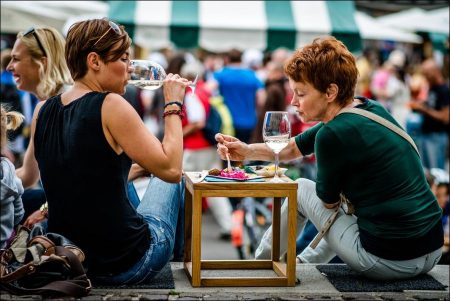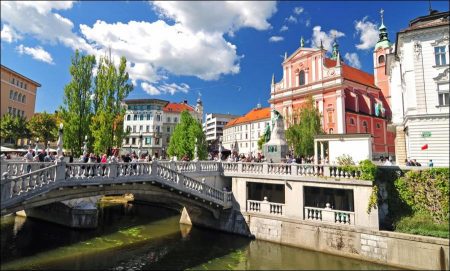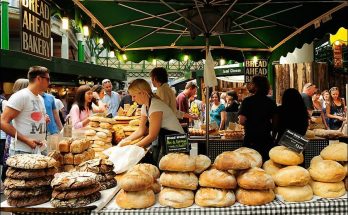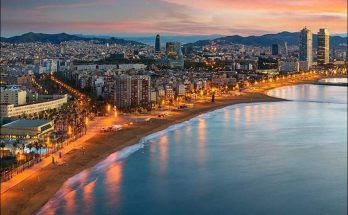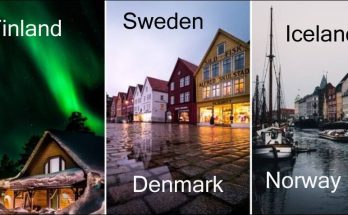Slovenia’s – and now Europe’s – green capital is a laid-back charmer of a city. Easily walkable, it boasts striking architecture and a vibrant outdoor eating and drinking culture.
s capital of one of Europe’s most forested countries, it’s perhaps fitting that Ljubljana is this year’s European Green Capital. A city of just 300,000 inhabitants, Ljubljana has often been ahead of the game when it comes to green initiatives – from the introduction of a sophisticated waste management system (Ljubljana was the first EU capital to adopt a zero-waste programme) and the creation of new green spaces from degraded urban land, to electrically powered golf buggy-type vehicles (kavalirs) offering free transport around the old town, which is otherwise closed to traffic. Official Green Capital celebrations kicked off last month, but there are numerous events taking place throughout the year.
The city oozes charm, a delightful confection of Baroque and Habsburg inspired-architecture, richly painted churches, abundant greenery and engaging riverside cafes. Moreover, its location, at the heart of this tiny, but astonishingly diverse country, means it’s no more than a couple of hours away from anywhere, be it the imperious limestone mountains and glacial lakes of the Julian Alps, the magical subterranean world of the Karst region, historic coastal towns or the lush vineyards in its hinterland.
What to Do and See in Ljubljana
The old town
Ljubljana’s most obvious point of reference is its gorgeous old town, buffered on one side by a neat castle-topped hill and on the other by the languorous Ljubljanica river, its willow-fringed banks sprinkled with easy-going restaurants, cafes and bars. It is an attractive lattice of cobbled streets, arched alleys and fine cultural monuments, many of which were bequeathed to the city by Jože Plečnik (1872–1957), Slovenia’s most celebrated urban planner. From the brilliantly conceived and much-photographed Triple bridge (he contributed the two angled footbridges in the 1930s), to the graceful market colonnade, the city is run through with his unique designs. Two-hour Plečnik tours can be arranged through the tourist office (€50 for a group of up to five people or €60 for up to 10), which also operates other excellent themed tours.
Otherwise, the best and most original of the city’s many guiding companies is CurioCity, whose tours include From Ljubljana With Love, which takes visitors to local social enterprises including restaurants and shops, and Lazy Sundays, which includes a park stroll, brunch, coffee and beer pitstops, but otherwise does not very much at all – in the best possible sense.
Ljubljana Castle
Lording it over the huddle of orange- and red-roofed townhouses below is the 16th-century Ljubljana Castle, whose grounds have been given over to a cluster of first-rate museums: Virtual Castle, a clever 3D multi-visual illustrating the castle’s development; an engrossing exhibition on Slovene history, with particularly illuminating sections on socialist Yugoslavia through to the Ten-Day War (or Slovenian Independence War) in 1991; and the sweet Museum of Puppetry, a long-cherished art form in Slovenia. The stocky Clock Tower, meanwhile, affords peerless views of the old town, and, in the distance, the serrated, snow-dusted Kamniške Alps. If you don’t fancy the stiff 15-minute climb to the top, a funicular goes right into the heart of the complex.
• Tickets €7.50 adult, €5.20 child, €19 family, or €10/€7/€26 including the funicular, ljubljanskigrad.si
Krakovo and Trnovo
Ljubljana is replete with genteel, village-like suburbs, but few are as appealing as Krakovo, within a 10-minute walk of the old town. An erstwhile haunt of Slovenian artists, today Krakovo is characterised by thickset medieval houses and neatly tended allotments, the produce of which sustains the huge open-air market on Vodnikov trg (Vodnik Square) as well as numerous city restaurants. In neighbouring Trnovo, there are more examples of Plečnik’s work, notably Trnovo bridge, on one side of which is the architect’s surprisingly modest house (€6, guided tours only, on the hour, 10am-5pm, mgml.si). Most of it has been left as it was, notably his studio, complete with equipment, books and plans.
Sundays
On Sunday mornings, the banks of the Ljubljanica are taken over by a terrific little flea market, selling everything from antique sofas and vintage stamps to ex-Yugoslav military uniforms. While outdoorsy types love nothing better than hiking up 669m Šmarna Gora, five miles north of the city. At the top, you can grab a warming cup of tea.
Eipprova ulica
This convivial canalside street is Ljubljana’s main entertainment hub and boasts a colourful ensemble of cafes and pubs.
Visits: 102
